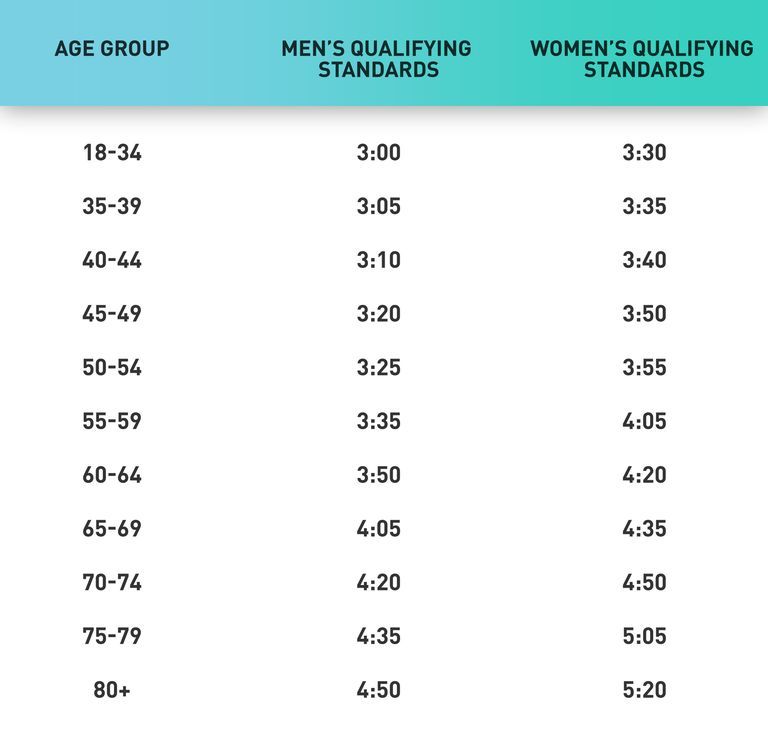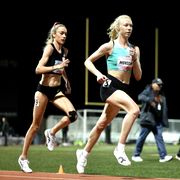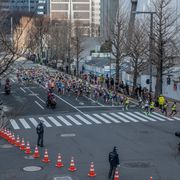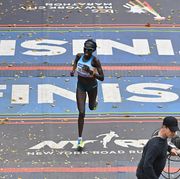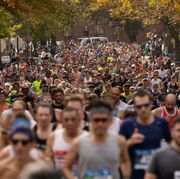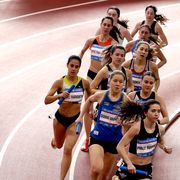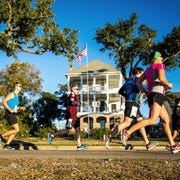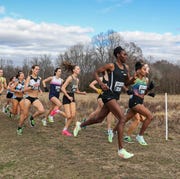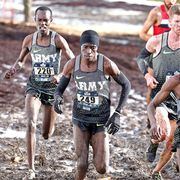- Registration for the 2023 Boston Marathon begins on September 12 and runs through September 16.
- The 2023 field size is 30,000 runners.
- For 2023, the BAA is not requiring COVID-19 vaccination at this time.
- The 2023 race will take place on April 17. Registration will take place at baa.org in the Athletes’ Village portal.
The Boston Marathon is unlike any other marathon, which is part of its appeal. You can’t just sign up whenever you wish. Most runners need a qualifying time from another marathon, and that qualifying time has to have been run with a set date range on a certified course.
And it’s not always enough just to run a little faster than your qualifying time for your gender and age group. In many recent years, getting into the race has required runners to best their qualifying times by substantial margins in order to gain entry.
For the 2021 race, for instance, which had a smaller field size than usual to prevent the spread of COVID-19, runners had to be 7:47 faster than their qualifying time to be accepted into the race, leaving thousands of runners who had tried to register shut out. At the 2022 race, however, in the wake of the pandemic, there was no cutoff time. All time qualifiers were accepted.
The registration process for the 2023 race has been streamlined to one week from two, and it does away with the past practice of serving the fastest runners first.
2023 Boston Marathon Registration Questions and Answers
Q. When is the 2023 Boston Marathon?
A. The race will be held on Monday, April 17, 2023. It will be the 127th running of the marathon.
Q. How many people can run it?
A. The field size for the 2023 is 30,000. In recent years, about 80 percent of entries were reserved for time qualifiers.
Q. When does registration open?
A. Registration typically opens for time qualifiers in the second week of September for the following year’s race. For 2023, registration begins on September 12.
Q. How does registration usually work?
A. Before the pandemic, registration preference was given to those who had run the fastest under their age and gender qualifying standard. Registration used to occur on a “rolling” schedule, beginning with the fastest qualifiers—those who had run 5 or more minutes faster than their qualifying time—in week one. If space remained in the field, the second week of registration remained open for other qualifiers.
For the 2023 race, registration is only one week long, and all qualifiers are invited to register at any time during that week, regardless of whether they beat their qualifying time by 30 minutes or 1 second.
In many recent years, some runners with a qualifying standard did not gain entry, because more than the number of qualifier spots tried to register. For the 2021 marathon, more than 9,000 time qualifiers were not accepted.
Until about 10 days after registration has ended, when the BAA makes its announcement, there is no way of knowing how much faster than one’s standard it will have been necessary to run in order to gain entry.
Boston Marathon Qualifying Standards
Runners younger than 18 aren’t allowed to register for the marathon. A runner’s age on the day of the marathon is the one that determines what age-group standard that runner must meet. The qualification window for the 2022 Boston Marathon began on Sunday, September 1, 2019 and the qualifying period will remain open until the conclusion of registration.
Q. Is proof of vaccination required for 2023?
A. All entrants had to be fully vaccinated to be allowed to race in 2022. At this time, BAA instructions say proof of vaccination will not be required for the 2023 race, but runners could be subject to other COVID-19 precautions, such as proof of a negative test.
Q. Is there a virtual race option for 2023?
A. A virtual option for 2023 has not yet been announced.
Q. Have those always been the qualifying standards?
A. No. Qualifying was first introduced for the 1970 race, and the standards have changed a number of times since then.
Q. Are net times or gun times used for qualifying standards?
A. Net times (i.e., from when a runner crossed the start line to when the runner crossed the finish line) are used for qualifying standards.
Q. The Boston Marathon was inviting people to pre-verify their qualifying times. What was that about?
A. After registration closes each year, the BAA has the unenviable task of checking all the qualifying times of the applicants and making sure all runners ran the times they said they did. This year, they tried to get a jump on that cumbersome process by allowing runners who knew they were going to register in September to pre-verify their times between August 18 and September 2.
A BAA spokesperson told Runner’s World: “These folks would still need to submit an entry application between Sept 12–16; the pre-verification simply got their qualifying time in our system so that when they go to register, their qualifying time pre-populates when filling out the registration form. It’s a new feature we were testing and will promote further leading up to the 2024 race, but its goal is to streamline the registration process a bit.”
If you missed the pre-verification window, there is no penalty, and pre-verification is no guarantee of entry into the race.
Q. Where can qualifying marathons be run?
A. In the U.S., marathons must be run on a course certified by USA Track & Field. Overseas marathons must be certified by that country’s athletic federation. A searchable database of certified courses in the U.S. can be found here.
Q. How can non-qualifiers enter the marathon?
A. The BAA sets aside a few thousand numbers for runners affiliated with one of the marathon’s official charities. These runners do not have to run a qualifying marathon. The charities are given numbers to distribute to runners, who usually pledge to raise a substantial amount of money for the charity. Charity runners go through the charity they're running for, rather than the qualifier registration system, to sign up for the marathon. Charities open registration for their available numbers at various times during the year.
Find the BAA’s guide here.
Q. Are there ways to get in other than a time qualification or charity?
A. There are, but you need to either be really fast or know somebody. Invited elites don’t necessarily have a previous marathon qualifying time (though they’ve all run impressive non-marathon distances). A certain number of entries for sponsors, the cities and towns along the course, and the media are set aside each year, along with promotional entries and other special invitations.

